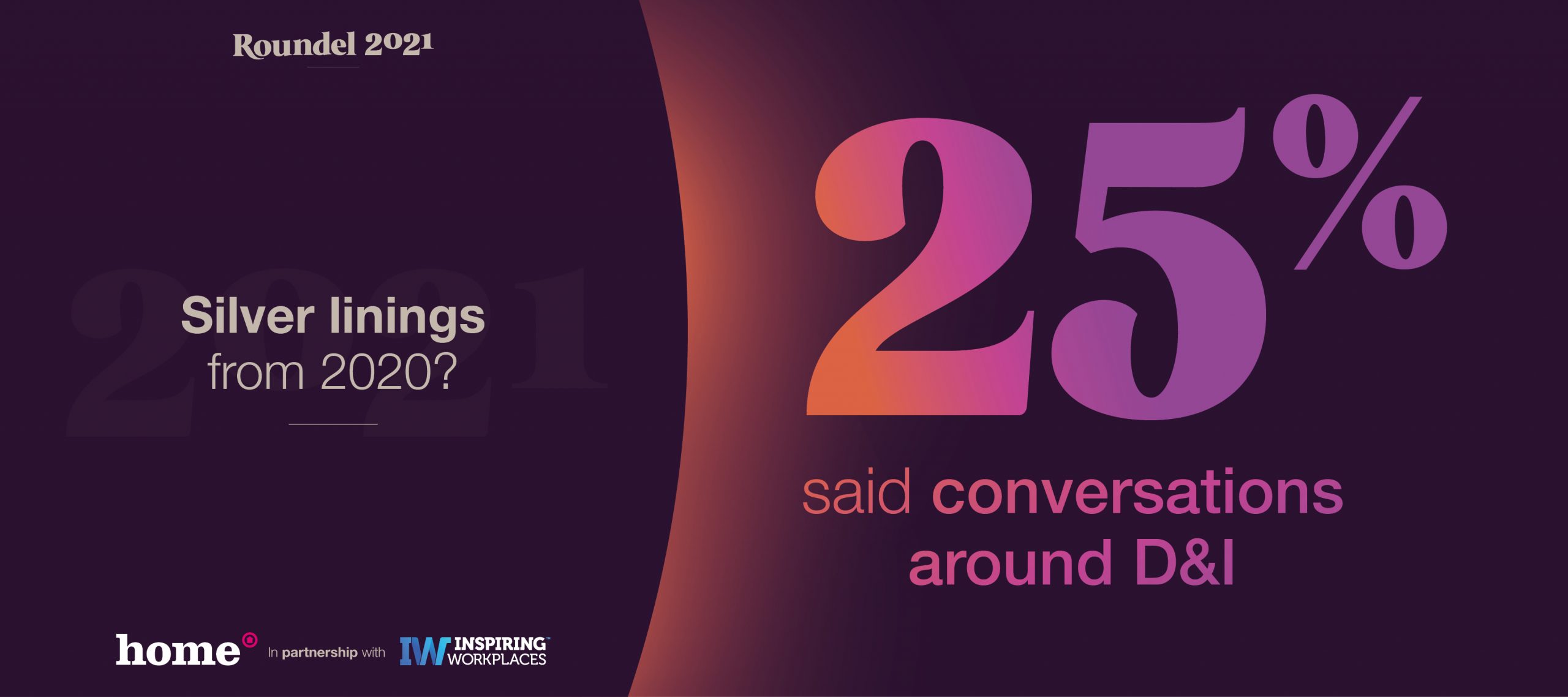Today we’re sharing the second in our series of posts dedicated to the results of Roundel 2021, our in-depth report on global employee experience trends. As part of our research, we asked our respondents if 2020 held any silver linings for their organisation (there were some positives, promise!) and…
25% said it was the way diversity and inclusion conversations opened up.
Also, almost 20% said that D&I had had the most positive impact on their employee experience.
Taking a step back
Although these results are heartening, the truth is that D&I was firmly on our radar long before multiple killings of black Americans and the disproportionately negative effects of COVID-19 on black and brown communities hit the headlines. In fact, 40% of last year’s Roundel respondents said that D&I was a top priority for 2020.
But what is D&I?
In truth, we hope that we won’t still be using this term in a few years’ time because so much progress has been made. For us, it all comes back to culture. If you have a culture that’s truly inclusive, everyone has permission to just be themselves – no discussion needed. This doesn’t mean ‘we don’t see differences’…it means we see them, we embrace them and we connect with one another because of them.
Psychological safety
The inclusive culture we describe above is underpinned by psychological safety (we’re going to get a little technical here so bear with us!) – a state in which you feel able to voice your ideas and concerns without fear of being punished. Looking at the Roundel data, 25% said D&I was their most important focus for 2021 – that’s down from 40% in 2020. Which feels surprising in light of recent events. But when we combine that with the fact that 24% said empowerment was their top trend, and a further 23% chose diversity of thought, a different type of picture starts to emerge. We’re seeing organisations going after the kind of culture that rewards bravery and celebrates difference. Cultures that build the foundations for diversity to thrive. Cultures that position an organisation as part of a global community which includes people of all backgrounds, ethnicities, sexual orientations, socio-economic profiles and beliefs.
Bolstering your approach
Although the news has focused on race, corporate D&I agendas tend to be broader, targeting ability and LGBTQ+ inclusion as well as race and gender equality. We’re sure that you made progress in 2020, but we wanted to share seven suggestions for making sure your strategies and policies are rooted in reality…and not just a tick in the box.
1. Be inclusive, at every level
Look at your board. Is it diverse? And do your board members have a history of supporting and improving diverse talent? Tokenism is the enemy of progress here.
2. Put it on the agenda
Make inclusion a topic of discussion at every level. Encourage storytelling and expression. And literally put it on your meeting agenda at board level and below. You can’t advance D&I without a culture of empowerment and speaking up.
3. Check your language
What you say matters. Check your language and your use of pronouns. Use your words to create a safe space.
4. Unite with others
Be an ally when no one is watching. Move the needle and use your privilege and position as an organisation and as individuals to amplify the voices of others.
5. Reposition your thinking (if you need to)
Check where your D&I activity sits. For some organisations it’s in CSR – but this isn’t about charity. It’s about making space and creating opportunity. If it sits here, it’s time to reposition your thinking.
6. Adopt a zero tolerance approach
Being truly inclusive means zero tolerance for exclusionary behaviour. Review how your policies are being implemented for any conscious or unconscious bias.
7. Make it reality
Look at your data. Pay disparity is a good place to start. Create true equality and inclusivity will follow.
We’ll be right back…
Stay tuned for more employee experience insights based on Roundel 2021 coming soon. In the meantime, you can download the full report, for free, here.





 Back to all
Back to all

